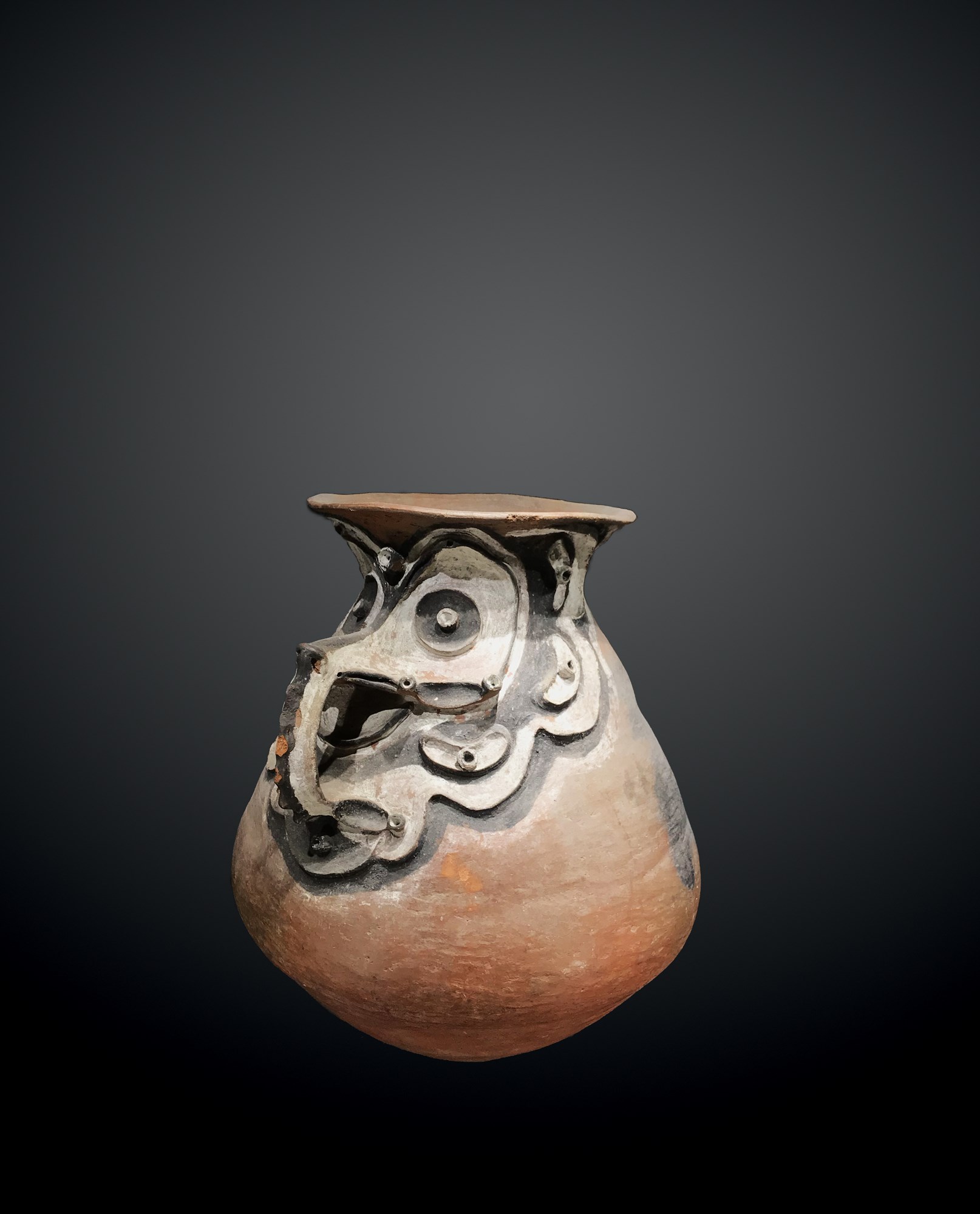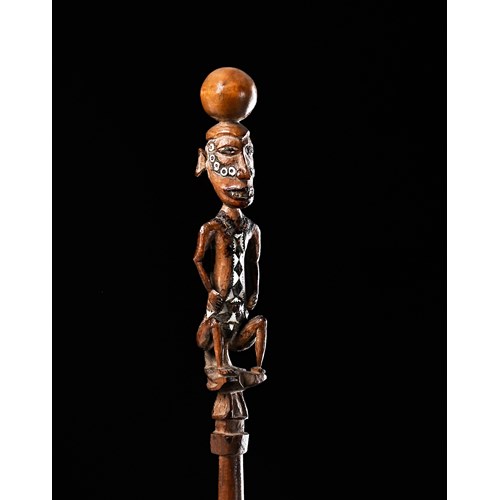Marketplace
Aibom Sago Jar
The Aibom (from the name of the village) do not harvest sago : they obtain it by trade with other neighboring groups. As a result, there is a constant need to store the sago and these magnificent jars are made for that purpose. There are two types of jars The small model is called NORANGGAU : it is short, squat, and rather inelegant and is used to store the fresh sago before it is either smoked or cooked. The large model, called DNMRAU {the present example), is used for the long-term storage of smoked sago. The face is placed to one side of the long neck on the large type of jar, while on lhe small one there are two to four faces placed around the upper third of the pot These faces represent either humans, animals or bush spirits. It is interesting to note that women make the jars, while the men decorate them by carving faces in the fresh clay and painting the jars once they are fired.
Provenance: Aibom Village, Iatmul Language Group, Chambri Lakes, Middle Sepik River, PNG, Melanesia. Low temperature fired clay and pigments (minor damages and wear). 51,5 x 42,5 cm. 20th century.
Literature: Pub. & Exh. FACES of CLAY, Galerie Meyer, Paris N° 5, 1991.
Plus d'œuvres d'art de la Galerie









